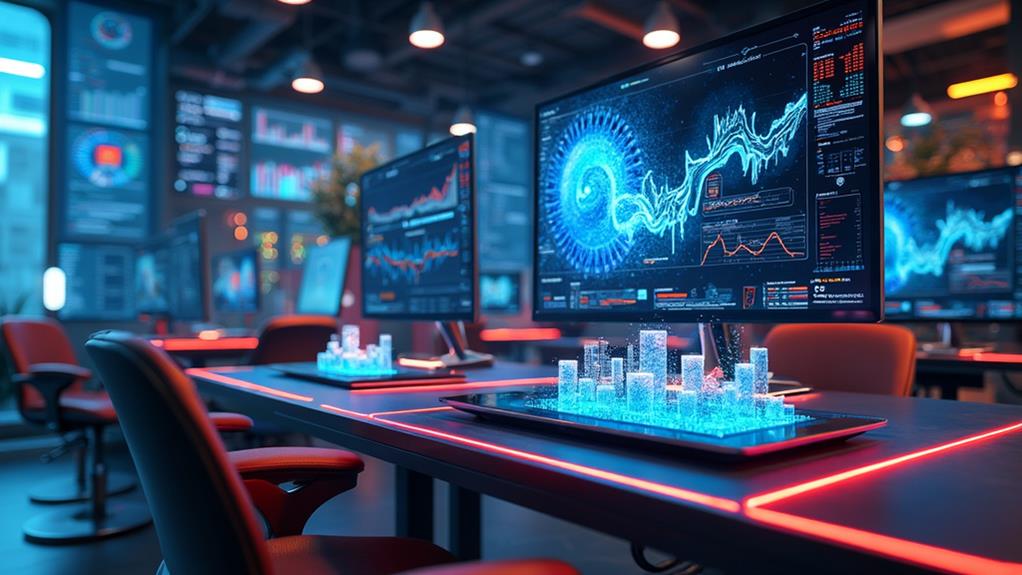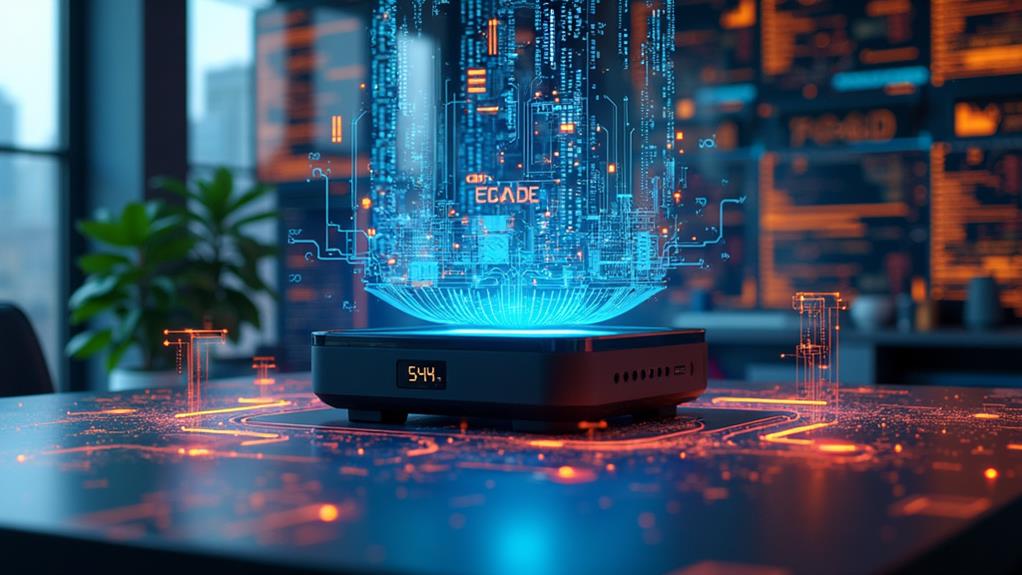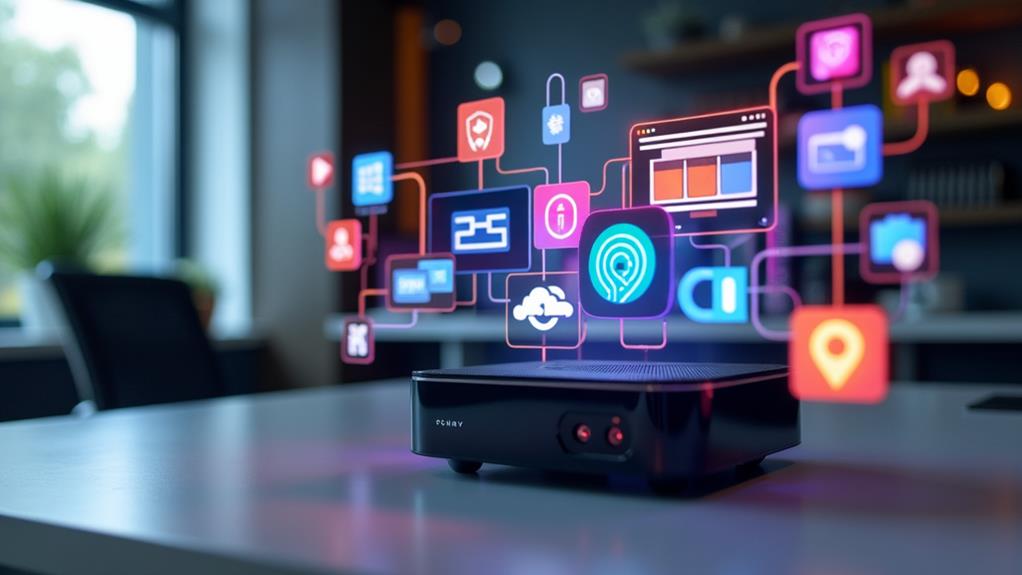



So you’ve got yourself a basic mini PC, perfect for compact spaces and light computing tasks. But you’re wondering, what tasks might push this little powerhouse beyond its limits? While mini PCs are known for their versatility and efficiency, there are certain tasks that may require a bit more processing power. In this article, we’ll explore the tasks that might challenge a basic mini PC and provide insight into when it might be necessary to upgrade to a more robust system. So, kick back, relax, and let’s uncover the limits of your trusty mini PC!
Web Browsing and Multitasking
Rendering Complex Websites
When it comes to web browsing and multitasking, a basic mini PC may struggle with rendering complex websites. As modern websites become more feature-rich and interactive, they require significant processing power to smoothly display all the elements and handle user interactions. From high-resolution images and videos to complex JavaScript applications, these websites can put a strain on the capabilities of a basic mini PC.
Multiple Tabs and Heavy Web Applications
Additionally, handling multiple tabs and heavy web applications can be challenging for a basic mini PC. As we all know, it’s quite common to have multiple tabs open while browsing the web. Each tab consumes system resources, and when you have a limited amount of RAM and processing power, it can lead to slowdowns and lag. Moreover, heavy web applications, such as online photo editors or collaborative document editors, require substantial resources to run smoothly, which may exceed the capabilities of a basic mini PC.
Simultaneous Tasks and High RAM Usage
In terms of multitasking, a basic mini PC may struggle with handling simultaneous tasks and high RAM usage. Multitasking involves running multiple applications or processes at the same time, and this can put a significant strain on system resources. Basic mini PCs usually have limited RAM capacity, and when the available RAM is exhausted, the computer starts relying on virtual memory, which can significantly slow down performance. Therefore, if you frequently find yourself juggling between various resource-intensive tasks or running software that demands a substantial amount of RAM, a basic mini PC may not be the best option for you.
Gaming and Graphics-Intensive Applications
High-End PC Gaming
When it comes to high-end PC gaming, a basic mini PC may not be the ideal choice. Gaming enthusiasts often invest in powerful gaming rigs that feature high-performance processors, dedicated graphics cards, and ample RAM. These components are crucial for rendering realistic graphics, achieving high frame rates, and providing an immersive gaming experience. Unfortunately, a basic mini PC may not possess the necessary hardware to handle the demands of graphically intensive games, resulting in low frame rates, lag, and overall subpar performance.
Resource-Intensive Graphics Software
Similarly, resource-intensive graphics software, such as video editing or 3D animation applications, may overwhelm a basic mini PC. These software tools require significant computing power and dedicated graphics processing units (GPUs) to handle tasks like rendering high-resolution videos or complex 3D animations. Without the necessary hardware, a basic mini PC may struggle to deliver smooth performance and may experience crashes or limited functionality.
Virtual Reality Applications
Virtual reality (VR) applications also fall into the category of tasks that a basic mini PC may not handle well. VR places heavy demands on system resources, requiring not only powerful graphics capabilities but also high-resolution displays and precise tracking of head movements. In order to provide a seamless and immersive VR experience, dedicated VR-ready hardware is necessary. While a basic mini PC can handle less demanding VR applications, it may struggle with the more immersive and resource-intensive experiences.
Video Editing and Rendering
Real-Time Video Editing
If you’re into video editing, a basic mini PC might not be the most suitable choice. Video editing involves processing and rendering large video files in real-time while concurrently handling effects, transitions, and color grading. These tasks demand significant computing power and the ability to handle multiple streams of high-resolution video. While a basic mini PC can handle simpler editing tasks, professional-grade video editing with seamless real-time playback and rendering may require a more robust workstation setup.
High-Resolution and Codec Demanding Projects
High-resolution and codec demanding projects further exacerbate the limitations of a basic mini PC. For example, working with 4K or even 8K videos requires substantial processing power and ample RAM to ensure smooth playback and efficient editing. Moreover, using specific codecs to compress or decompress videos can significantly impact performance. A basic mini PC may struggle to keep up with the demands of high-resolution and codec-intensive projects, leading to slow rendering times and an overall frustrating editing experience.
GPU-Accelerated Rendering
GPU-accelerated rendering is another aspect that a basic mini PC may not excel in. Many video editing software tools utilize the processing power of dedicated GPUs to accelerate rendering and export times. However, most basic mini PCs lack dedicated GPUs or rely on integrated graphics solutions, which may not provide sufficient power for efficient GPU-accelerated rendering. As a result, the exporting and rendering processes may be significantly slower compared to a machine equipped with a high-performance GPU.
3D Modeling and Animation
Complex 3D Modeling
3D modeling and animation tasks can push a basic mini PC to its limits. Creating and manipulating complex 3D models often requires robust processors and ample RAM to handle the immense amount of data involved. Whether you’re designing architectural structures, creating game assets, or visualizing product prototypes, a basic mini PC may struggle to provide smooth and responsive performance. Long processing times, lag, and limited capabilities may hinder your ability to efficiently work on intricate 3D projects.
Real-Time Rendering and Animations
Real-time rendering and animations further add to the challenges faced by a basic mini PC. While simpler animations or low-polygon models may not be an issue, more detailed and intricate animations can quickly overwhelm the processing capabilities of a basic mini PC. Real-time rendering, where changes in the scene are instantly displayed, demands significant computing power to achieve smooth and fluid animations. Without the necessary resources, a basic mini PC may struggle to maintain real-time interactivity, leading to frustration and reduced productivity.
Ray Tracing and Simulations
Ray tracing and simulations represent computationally intensive tasks in the realm of 3D modeling and animation. Ray tracing, a rendering technique used to generate realistic lighting and reflections, relies heavily on powerful processors and dedicated GPUs. Simulations, such as fluid dynamics or physics-based animations, also demand significant computing resources. Unfortunately, a basic mini PC may lack the necessary hardware to efficiently handle these advanced rendering techniques and simulations, resulting in slow processing times and compromised visual fidelity.
Professional Audio Production
Multiple Track Recording and Mixing
For those involved in professional audio production, a basic mini PC may not meet the requirements. Working with multiple track recordings and mixing them in real-time demands substantial processing power and low latency. Basic mini PCs, while capable of handling simple audio recording and mixing tasks, may struggle when dealing with complex projects with dozens of audio tracks and advanced effects. The limited CPU and RAM capacity can lead to dropouts, distorted audio, or an overall compromised workflow.
Real-Time Effects and Virtual Instruments
Real-time effects and virtual instruments add another layer of complexity to audio production tasks. Applying effects, such as reverb, compression, or equalization, in real-time requires sufficient processing power to ensure minimal latency and smooth playback. Similarly, using virtual instruments, like software synthesizers or samplers, demands significant CPU resources to generate realistic sounds and respond to MIDI input without noticeable delay. A basic mini PC may struggle to handle these real-time effects and virtual instruments, resulting in latency issues, audio glitches, or even system crashes.
High-Sample-Rate and Bit Depth Projects
Working on high-sample-rate and high-bit-depth projects is yet another challenge for a basic mini PC in the realm of professional audio production. High-sample-rate recording and editing, such as 96kHz or 192kHz, require more processing power and RAM to handle the increased data flow. Similarly, high-bit-depth projects, such as those with 24-bit or 32-bit audio, demand more computational resources to accurately represent the dynamic range of the audio. A basic mini PC may struggle to handle these high-sample-rate and bit-depth projects, resulting in reduced performance and potential audio degradation.
Data Analysis and Machine Learning
Large Datasets and Complex Algorithms
data analysis and machine learning tasks often involve working with large datasets and complex algorithms. Analyzing and processing massive amounts of data requires substantial computational power and adequate memory capacity. A basic mini PC, with its limited processing power and potentially restricted RAM capacity, may struggle to handle these data-intensive tasks efficiently. Processing times can be significantly prolonged, and working with large datasets may become impractical due to memory limitations.
Real-Time Processing and Training
Real-time data processing and machine learning training are additional challenges for a basic mini PC. Real-time data processing, where data needs to be analyzed and processed as it arrives, demands immediate response times. Machine learning training, involving training complex models on large datasets, requires substantial computational resources and benefit greatly from high-performance GPUs. A basic mini PC may find it challenging to keep up with the real-time processing demands or considerably extend the time required for machine learning model training.
GPU-Intensive Computations
Furthermore, GPU-intensive computations are a significant hurdle for a basic mini PC in the realm of data analysis and machine learning. Many machine learning algorithms, such as deep learning, heavily rely on GPU acceleration to speed up the computations and training processes. A basic mini PC, typically lacking dedicated GPUs or featuring less powerful integrated graphics solutions, may not offer the necessary GPU horsepower to effectively harness the power of these algorithms. As a result, the performance and efficiency of the computations may be severely limited.
Server Hosting and Virtualization
Intensive and Resource-Hungry Applications
For server hosting and virtualization tasks, a basic mini PC may fall short in terms of handling intensive and resource-hungry applications. Servers are often used to run complex software applications or host multiple virtual machines simultaneously. These applications and virtual machines can demand substantial computational power, memory, and storage capacity. While a basic mini PC can handle simpler server hosting tasks, it may struggle under the load of more demanding workloads, resulting in reduced performance and potentially affecting service availability.
Multiple Virtual Machines and Clients
Running multiple virtual machines and serving numerous clients concurrently requires robust hardware capabilities. Virtual machines rely on emulation, which demands processing power and memory to effectively run separate operating systems. Similarly, serving multiple clients involves handling numerous network connections, data transfers, and processing requests simultaneously. A basic mini PC may struggle to efficiently manage the demands of multiple virtual machines and clients, leading to noticeable performance degradation or even system instability.
High Network Bandwidth Demands
Server hosting often involves serving content over high network bandwidth connections, which puts additional strain on a basic mini PC. Hosting websites, streaming media, or serving large files can require substantial network throughput and optimal network latency. A basic mini PC’s limited networking capabilities may become a bottleneck, resulting in reduced transfer speeds, increased latency, or even dropped connections. Therefore, if you specifically require high network bandwidth demands for your server hosting needs, a basic mini PC may not provide the necessary network performance.
CAD/CAM and Engineering Simulations
Complex 2D/3D Designing and Simulation
For CAD/CAM (Computer-Aided Design/Computer-Aided Manufacturing) and engineering simulations, a basic mini PC may not be the most suitable choice. Designing complex 2D or 3D models in CAD software demands substantial computational power and memory capacity. From intricate architectural designs to detailed mechanical assemblies, these tasks can quickly overwhelm a basic mini PC’s capabilities. Similarly, conducting engineering simulations, such as fluid dynamics or structural analysis, requires significant processing power to handle the complex calculations involved. A basic mini PC may struggle to provide smooth and efficient workflows for CAD/CAM and engineering simulations.
Highly Detailed and Large Assemblies
Handling highly detailed and large assemblies is another challenge for a basic mini PC. Assemblies in CAD software often involve numerous interconnected parts and intricate geometry. Manipulating and visualizing these assemblies demand substantial processing power and memory to ensure smooth interaction and real-time rendering. Unfortunately, a basic mini PC may experience lag, slow refresh rates, or even crashes when working with highly detailed and large assemblies, hindering productivity and potentially compromising the accuracy of the design.
Real-Time Testing and Analysis
Real-time testing and analysis tasks further stretch the capabilities of a basic mini PC in the field of CAD/CAM and engineering simulations. Whether it’s conducting simulations of mechanical systems, performing stress analysis, or evaluating performance under different conditions, real-time testing requires immediate feedback and responsiveness. A basic mini PC may not have the necessary computational power to deliver real-time test results or handle the complex analysis involved, potentially impeding the design and testing process.
Scientific Research and Simulations
Number Crunching and Parallel Computations
For scientific research and simulations, a basic mini PC may not be the most optimal solution. Scientific research often involves number crunching, running simulations, or solving complex mathematical equations. These tasks require substantial processing power and memory to handle the large amounts of data and computations involved. A basic mini PC may struggle to efficiently execute these number crunching and parallel computing tasks, resulting in extended processing times and reduced productivity.
Simulating Physical Phenomena
Simulating physical phenomena, such as particle interactions, fluid dynamics, or astrophysical simulations, is computation-intensive and demands significant computational resources. These simulations involve solving complex mathematical equations and performing calculations on vast datasets. A basic mini PC may face severe limitations in terms of processing power and memory, hindering the ability to accurately simulate and analyze these physical phenomena. Longer simulation times and compromised accuracy may result from running these simulations on a basic mini PC.
Simulation of Biological and Chemical Processes
Similarly, the simulation of biological and chemical processes can strain the capabilities of a basic mini PC. Whether it’s molecular dynamics, protein folding, or drug interaction simulations, these tasks involve extensive computational resources. Simulating the behavior of molecules or the interactions between biological or chemical entities requires substantial processing power and memory capacity. A basic mini PC may struggle to handle these complex simulations, leading to reduced accuracy, increased processing times, and potentially compromising the validity of the results.
Cryptocurrency Mining and Blockchain Processing
Hashrate and Mining Algorithm Demands
Cryptocurrency mining and blockchain processing tasks can significantly exceed the capabilities of a basic mini PC. Mining cryptocurrencies, such as Bitcoin or Ethereum, relies on achieving high hashrates, which measures the number of calculations a mining rig can perform per second. Basic mini PCs lack the specialized hardware, such as application-specific integrated circuits (ASICs) or graphics processing units (GPUs), necessary to achieve competitive hashrates. Consequently, a basic mini PC may not be efficient or cost-effective for cryptocurrency mining.
Complex Verification and Validation
Blockchain processing involves verifying and validating transactions on decentralized networks, such as the Bitcoin blockchain. This process demands substantial computational power and network connectivity to efficiently verify large numbers of transactions and maintain a synchronized copy of the blockchain. A basic mini PC, with its limited hardware capabilities and potentially constrained networking options, may struggle to keep up with the increasingly complex verification and validation requirements of decentralized networks.
Distributed Ledger Computation
Distributed ledger computation, inherent in blockchain technology, relies on solving complex cryptographic puzzles to reach consensus across network participants. This process, commonly known as proof-of-work, requires significant computational power to find the solution to the puzzle. Basic mini PCs, without specialized hardware or high-performance GPUs, may lack the necessary computing resources to effectively participate in distributed ledger computations. As a result, a basic mini PC may not be capable of efficiently contributing to the distributed ledger system or mining cryptocurrencies using proof-of-work algorithms.
In conclusion, a basic mini PC may struggle with various tasks that demand significant processing power, ample memory capacity, or dedicated graphics capabilities. Whether it’s rendering complex websites, running resource-intensive applications, handling high-resolution video editing, conducting 3D modeling and simulation, or processing large datasets for data analysis or scientific research, a more robust workstation setup or specialized hardware may be required. Recognizing the limitations of a basic mini PC allows users to make informed decisions based on their specific needs and optimize their workflow for maximum efficiency and productivity.
Disclosure: As an Amazon Associate, I earn from qualifying purchases.





